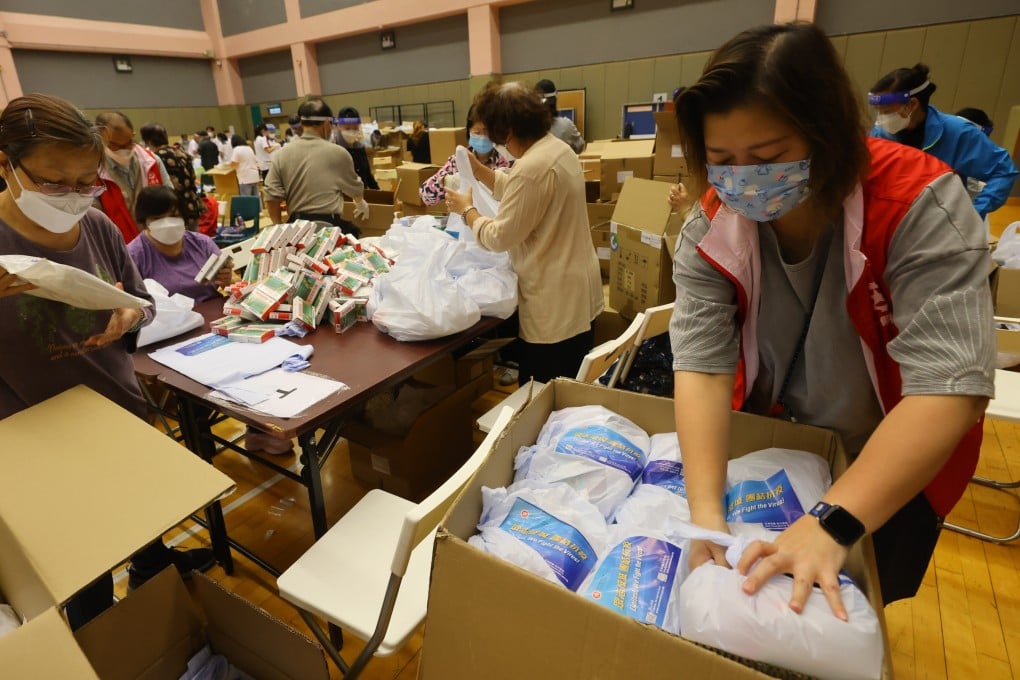Coronavirus Hong Kong: ‘residents who test positive in mass voluntary screening can isolate at home’ as city records 2,777 cases
- However, if a patient’s living environment is too crowded, or is also home to high-risk people, they will still be required to go to a government isolation facility
- City leader Carrie Lam also said the voluntary at-home testing exercise would provide a snapshot of the pandemic, while also identifying asymptomatic cases and cutting off transmission chains

Hong Kong residents who test positive during a mass voluntary Covid-19 screening exercise this week can isolate themselves at home rather than in a government facility, provided their living spaces are suitable, health officials have said.
Chief Executive Carrie Lam Cheng Yuet-ngor also said rapid antigen tests (RAT) might be a prerequisite for some premises and activities in the future when social-distancing measures were relaxed, and the mass screening exercise would help residents learn how to use them.
“When we want to be more prudent in some premises or activities, we might require participants or people entering those places to do RATs beforehand,” Lam said, adding that she agreed with the view of an expert who said the voluntary mass testing would be a “warm-up exercise” for future RAT use.
The city reported 2,777 new coronavirus cases and 111 additional fatalities on Wednesday, including 27 backlogged deaths. Hong Kong’s current tally of Covid-19 cases stands at 1,180,591, with 8,460 related deaths.
Speaking at her regular Covid-19 briefing on the same day, Lam said the voluntary at-home RAT scheme would provide a snapshot of how many Hongkongers were infected, while also identifying asymptomatic cases and cutting off transmission chains.
Lam had previously urged all residents to take part in the voluntary testing drive from April 8 to 10 using kits delivered to their homes by the government and to report any infections to authorities within 24 hours. However, she also stressed that she had not given up on plans for mandatory universal testing in the future.